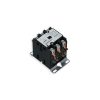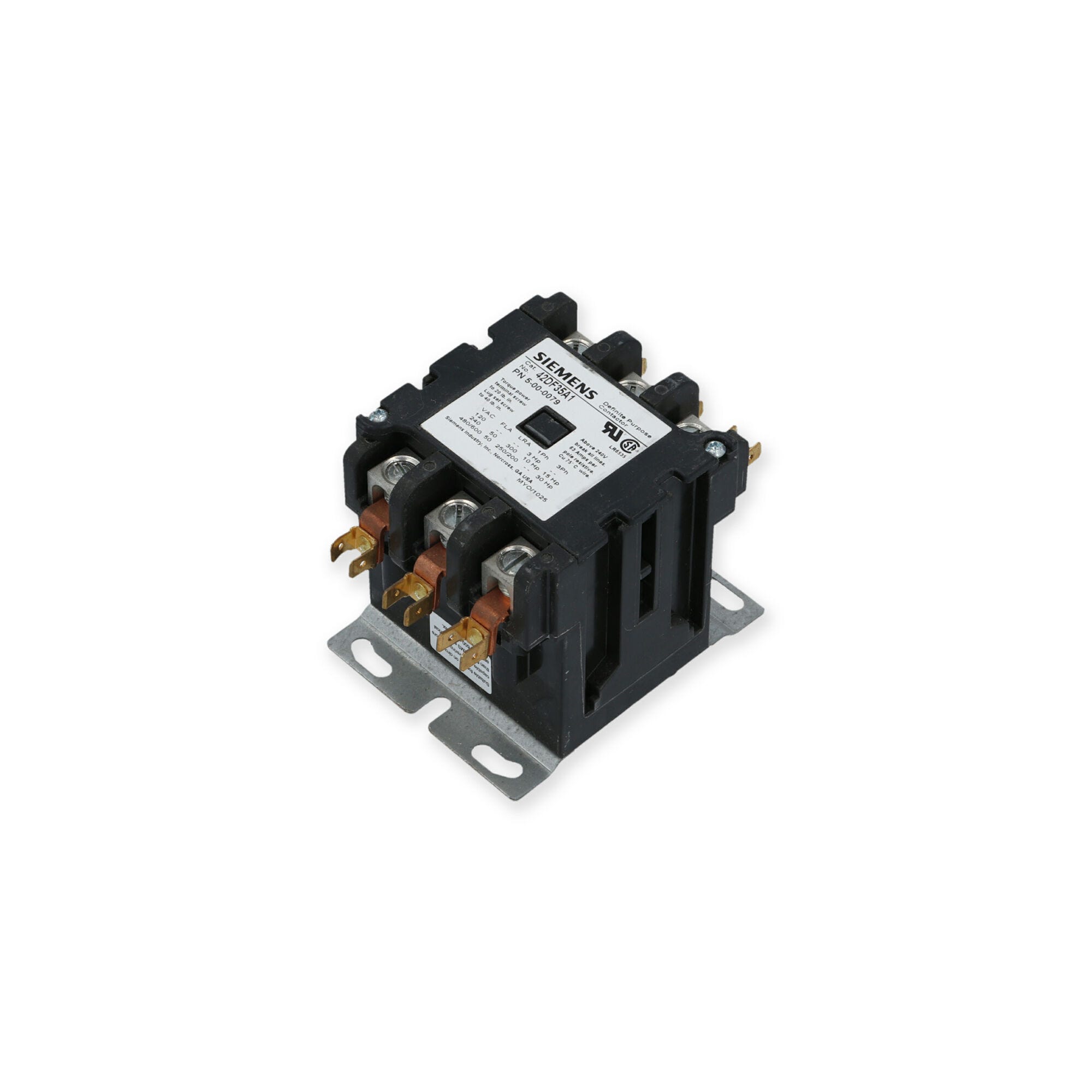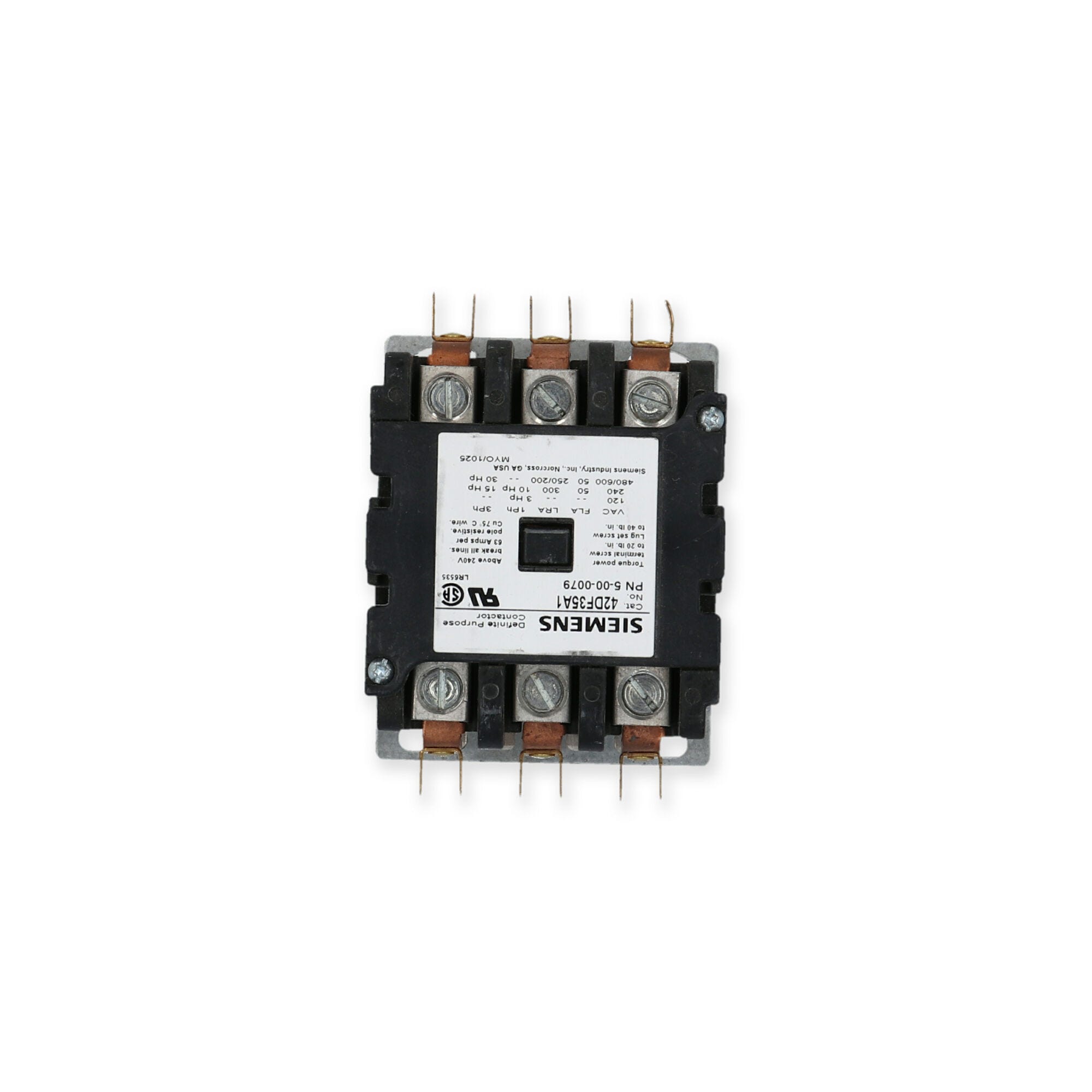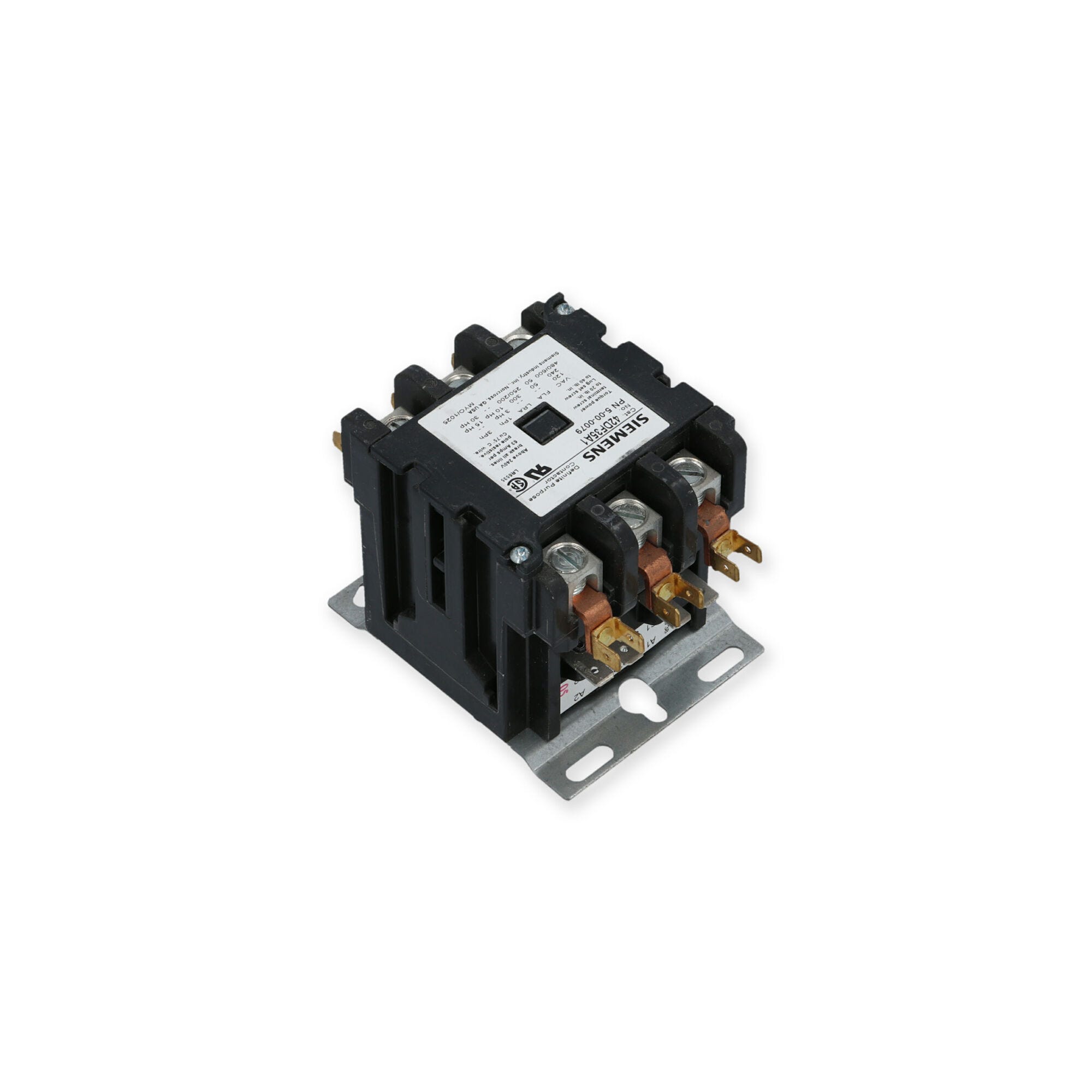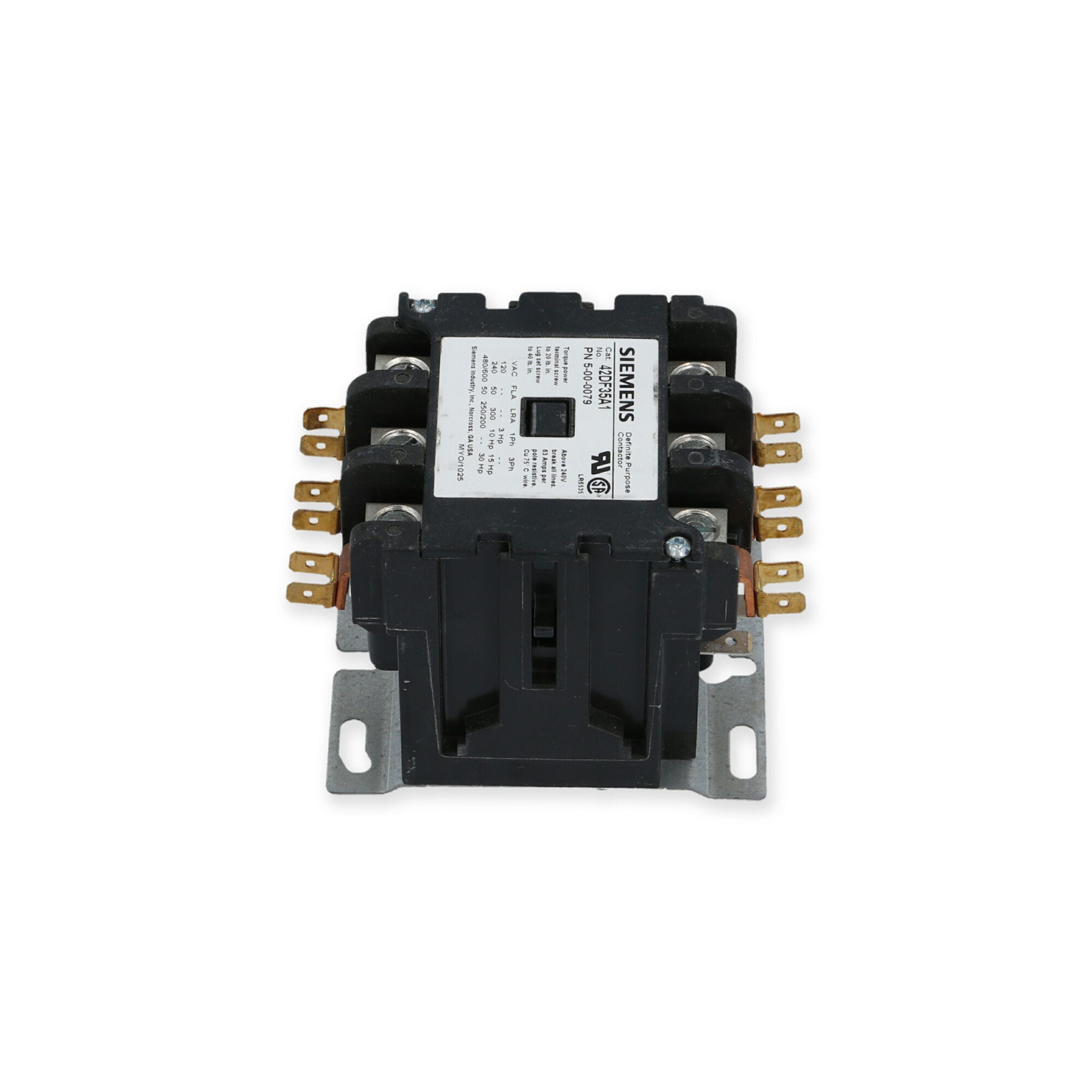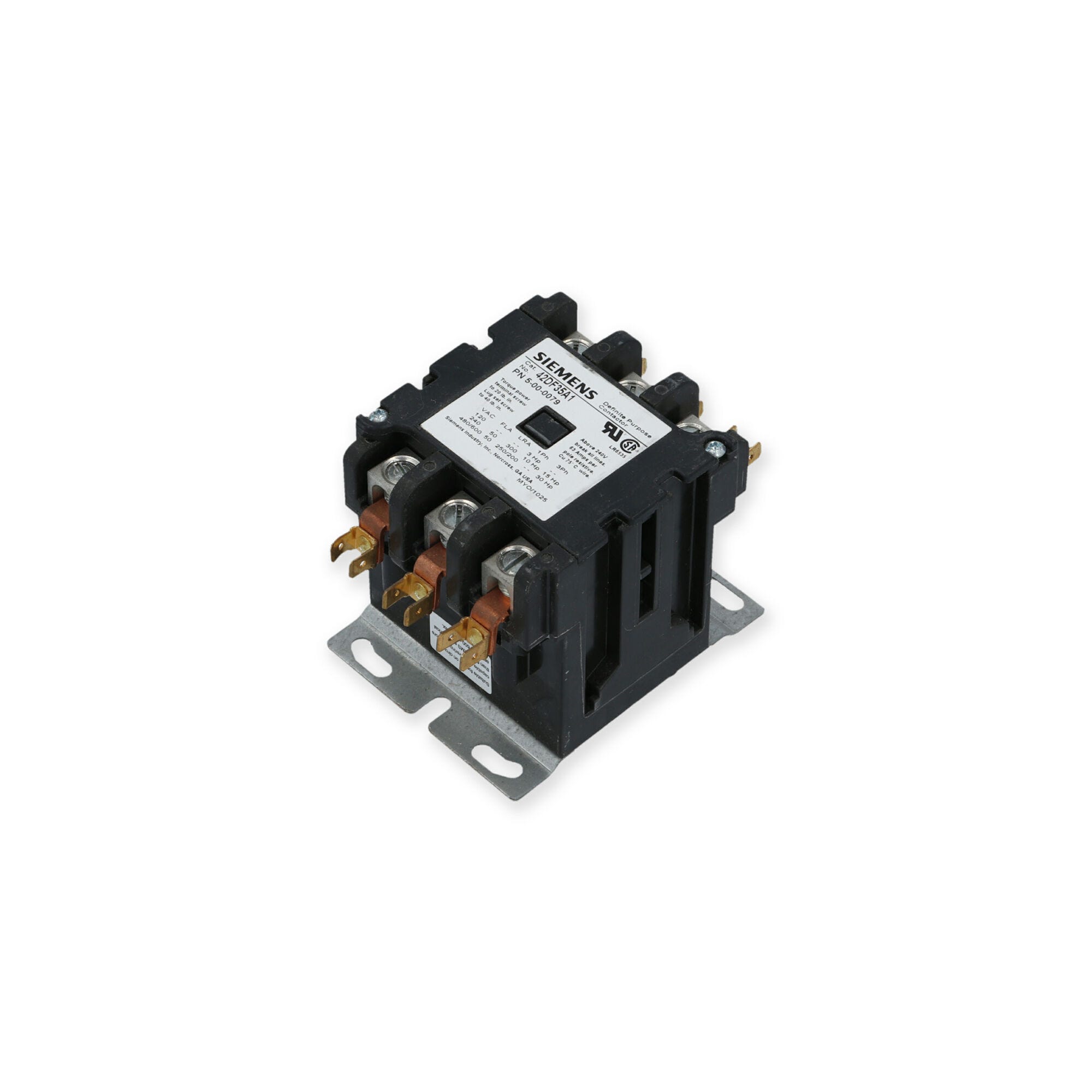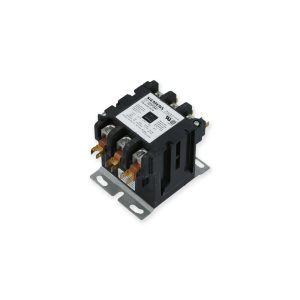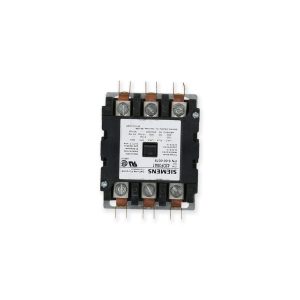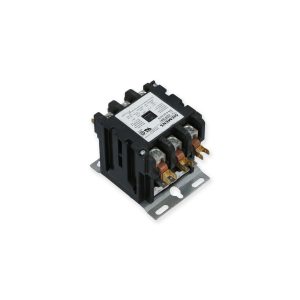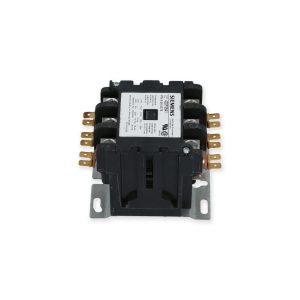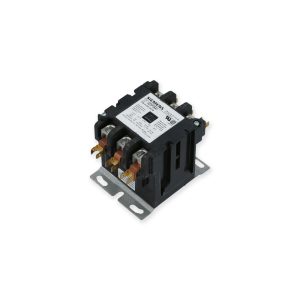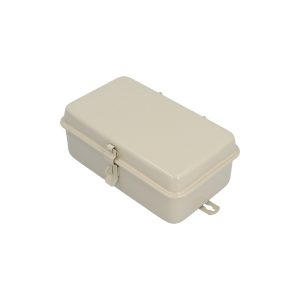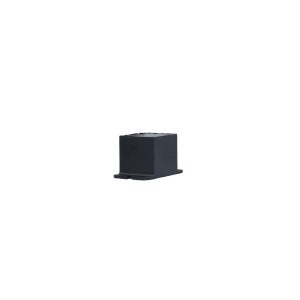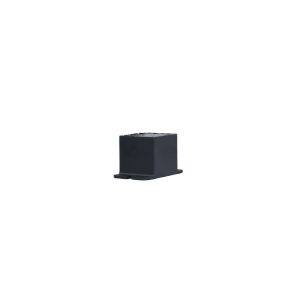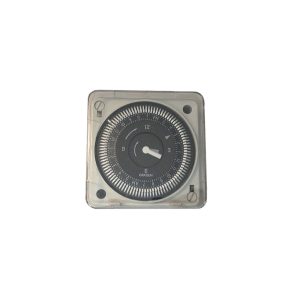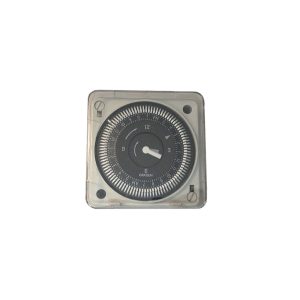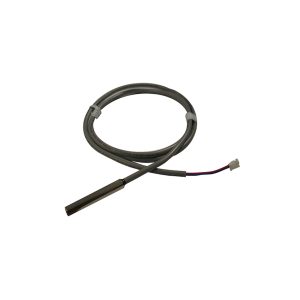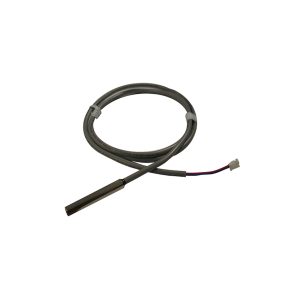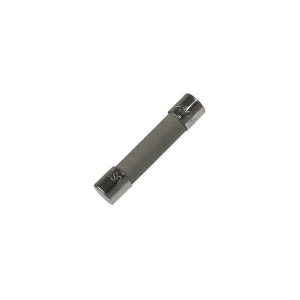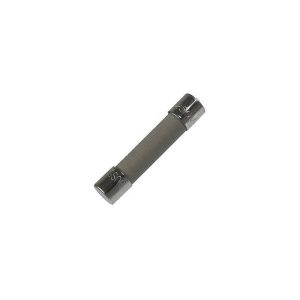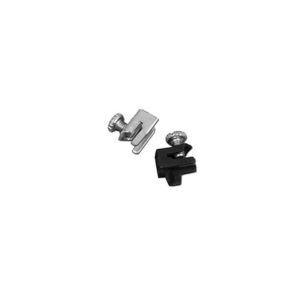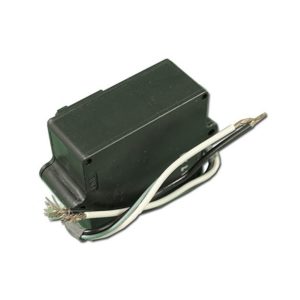42DF35AF Generic Contactor
$0.00
Contactor, 115V, TPST, 60 Amp
Out of stock
Want to be notified when this product is back in stock?
Generic Contactor 42DF35AF Reliable electronics Class 45 and 42 DP Contactors have industry standard mounting but they offer so much more. The Siemens DP Contactors with their compact sizing save space allowing for smaller panels, more wiring room, and easy retrofits. The quick connect for power and control wires reduce installation and retrofit times. In order to reduce maintenance, provide longer life, and improve performance the Siemens DP Contactor family has a fully encapsulated body to reduce the penetration of dust and other contaminants. Other features include visual contact position indication, weld-resistant silver cadmium oxide contacts, Class F coil insulation and quiet operation.
Additional Information
| Amperage (Amps) | 60 |
| Voltage | 120 Vac |
| Pole/Throw | 3PST |
| Action | 3PST |
Alternate Part Numbers
- 5-00-0079
What is a 42DF35AF Contactor?
In the context of electrical systems, a 42DF35AF contactor is an electrical component that is used to control the flow of electrical power. It is a type of switch that is specifically designed for handling high-voltage and high-current applications. Contactors are commonly used in various electrical systems and equipment, including HVAC systems, motors, lighting circuits, and industrial machinery.
A contactor consists of a coil and a set of contacts. The coil is energized by an electrical current, creating a magnetic field that attracts the contacts and closes the circuit. When the coil is de-energized, the contacts separate and open the circuit, interrupting the flow of electrical power.
Contactors are typically controlled by a control circuit or a control device, such as a switch or a relay. They provide a reliable and durable means of controlling electrical loads, allowing for safe and efficient operation of electrical systems. Contactors are available in various sizes and configurations to accommodate different voltage and current ratings, depending on the specific application.
Overall, contactors play a crucial role in the operation and control of electrical systems by providing a means of reliably switching electrical power on and off.
How does a 42DF35AF Contactor work?
A 42DF35AF contactor is an electrical device that controls the flow of electrical power in a circuit. It consists of a coil and a set of contacts. When the coil is energized, it creates a magnetic field that attracts the contacts and closes the circuit, allowing electrical current to flow. When the coil is de-energized, the magnetic field dissipates, and the contacts separate, opening the circuit and interrupting the flow of electrical power.
The operation of a contactor can be summarized in the following steps:
- Coil Energization: When an electrical current is applied to the coil, it generates a magnetic field around it. The strength of the magnetic field depends on the current flowing through the coil.
- Magnetic Attraction: The magnetic field generated by the coil attracts the contacts, pulling them together. This action closes the circuit and allows electrical current to flow through the contactor.
- Circuit Completion: With the contacts closed, the contactor establishes a low-resistance path for the electrical current to flow from the power source to the load connected to the circuit.
- Coil De-energization: When the electrical current to the coil is interrupted or turned off, the magnetic field dissipates. As a result, the contacts lose their attraction and separate.
- Circuit Interruption: With the contacts open, the circuit is interrupted, and the flow of electrical current is cut off. This prevents further power transmission to the load.
The coil and contacts of a contactor are designed to handle high voltage and current levels, making them suitable for controlling heavy loads in various applications. They are commonly used in industrial machinery, HVAC systems, motor control, lighting circuits, and other electrical systems where reliable and efficient control of electrical power is necessary.
Overall, contactors provide a robust and reliable means of switching electrical power on and off, allowing for the safe and efficient operation of electrical systems.
| Brand | Generic |
|---|
Related products
Capacitors & Electrical Components
Capacitors & Electrical Components
Capacitors & Electrical Components
Capacitors & Electrical Components
Capacitors & Electrical Components
Capacitors & Electrical Components
Capacitors & Electrical Components
Capacitors & Electrical Components


